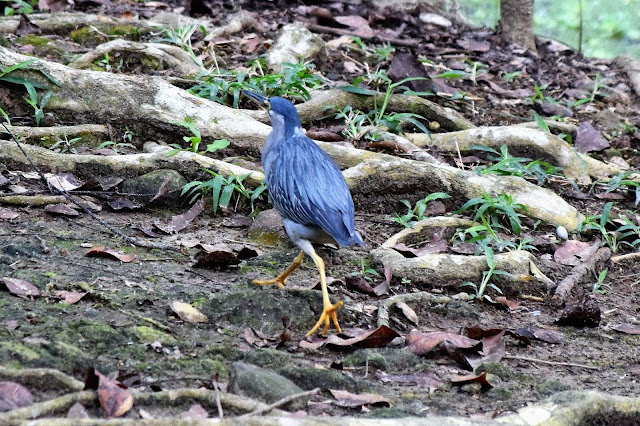Urabá Antioquia is a sub-region in the Colombian Department of Antioquia. The region is made up by 24 municipalities. Most of this regions northern portion is part of the Colombian Caribbean Region bordering the Caribbean sea.
Colombia’s northwestern Urabá region is located along the Panamanian border and touches both the Pacific Ocean and the Caribbean.
The region consists of jungle along the Panamanian border and the Pacific, and inland has large plots of agricultural land.
Urabá is spread out over the departments of Choco, Antioquia and Cordoba and was home to Colombia’s first city, Santa Maria la Antigua del Darien.
The Wildlife
Much of the wildlife in Urabá, especially the birds, are unique to the area. My favourites are the Red Howler Monkey, the Banana Tree Frog, and the Fork-tailed Flycatcher.
 |
| Blue-crowned Parakeet |
 |
| Chestnut-fronted Macaw |
 |
| Fork-tailed Flycatcher |
 |
| Tropical Kingbird |
 |
| Weaver Bird Nests |
 |
| Yellow-headed Caracara |
 |
| Venezuelan Red Howler |
 |
| Bat |
 |
| Water Buffalo |
 |
| Banana Tree Frog |
 |
| Piedras Blancas (White Stones) |
 |
| Piedras Blancas (White Stones) |
 |
| Native Indian House |
 |
| Jungle Mountain Range |
Banana Plantation
When a Banana plant is producing fruit, it also grows a new shoot from the roots. After it has produced its fruit, the main trunk which bore the fruit is felled, and the shoot is nurtured for the next production of Bananas. It takes around 6 months for the next production of Bananas to occur.

 |
| Manzana de Agua (Water Apple) |
 |
| Guanabana |
 |
| Chiva - Transport for the plantation employees |
 |
| Cut Bananas waiting to be processed |
 |
| Selecting the Bananas |
 |
| Washing Station |
 |
| Packing |
 |
| Cutting the Bananas |
 |
| Inside the Plantation |

 |
| Natural Fertiliser |
 |
| Loading Bananas for Delivery |
 |
| Loading Bay |
 |
| Banana Plantation |
 |
| Young Banana Trees |
 |
| The best way to travel through the plantation |
 |
| Footbridge |
 |
| Picnic in the shade of a tree |
 |
| Mmmm can not wait to start |
 |
| Picnic prepared in Banana Leaves |
 |
| Personal Security |
The Pineapple Plantation
Pineapple production is extremely time consuming. It takes 18 months from planting the seedling until it produces 1 pineapple. There are multiple stages in the production. First prepare the land, next plant the seedlings, when large enough cut the top out of one plant to see if it is growing a fruit. Prepare the fruiting stage. Cut the fruits when ready. Like the bananas throw away the parent plant, but remove all the side shoots beforehand. Cut all the leaves to half size on the seedlings, then plant them in the prepared land.
 |
| Pineapple Plantation |
 |
| The baby pineapple just starting to grow |
 |
| Young Pineapples |
 |
| Preparing a new crop |
 |
| Sorting by size. The 3 in the centre are destined for Europe. The others for domestic consumption in Colombia |
 |
| Washing and sorting by size |
 |
| Pineapples boxed and ready for delivery |






























































